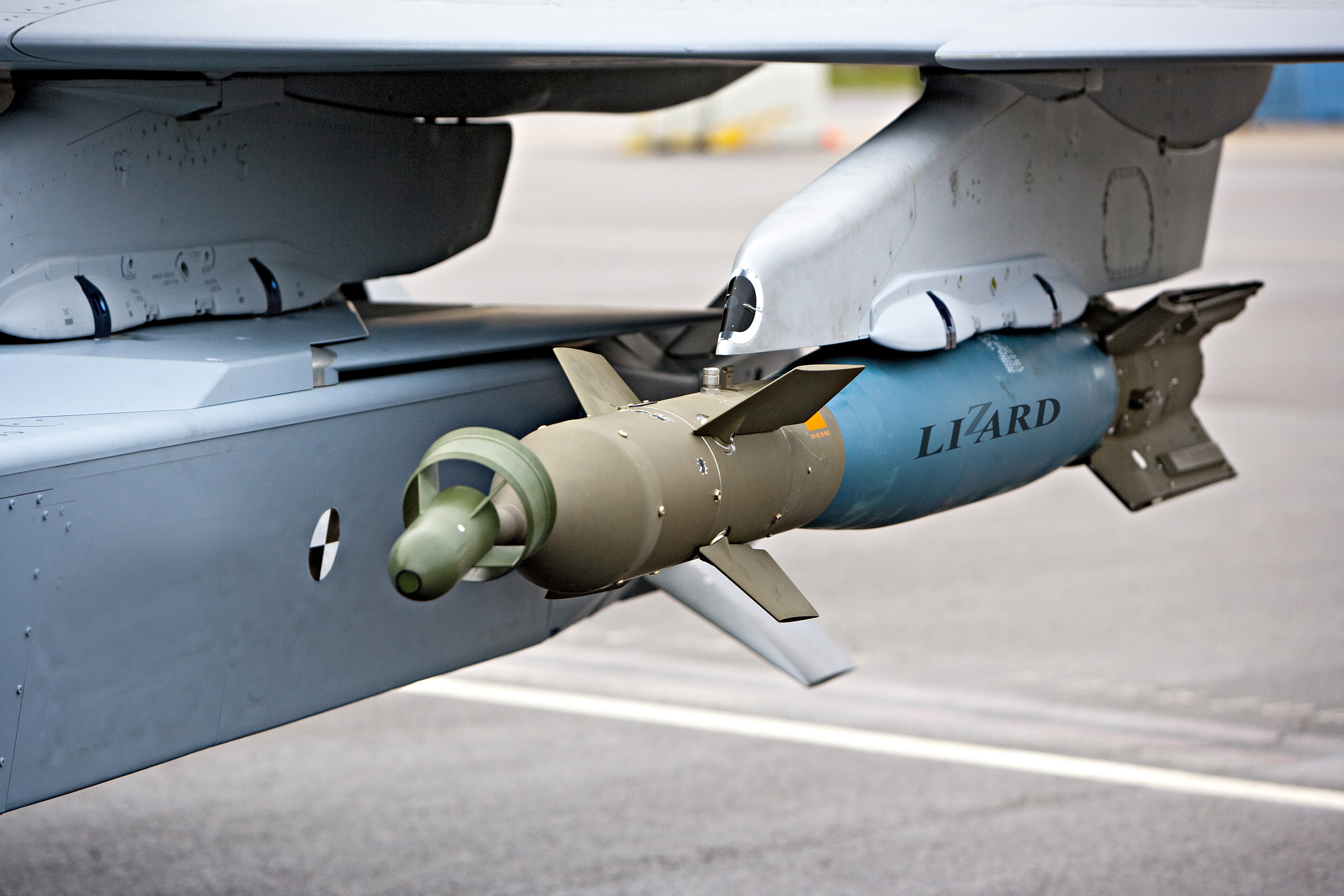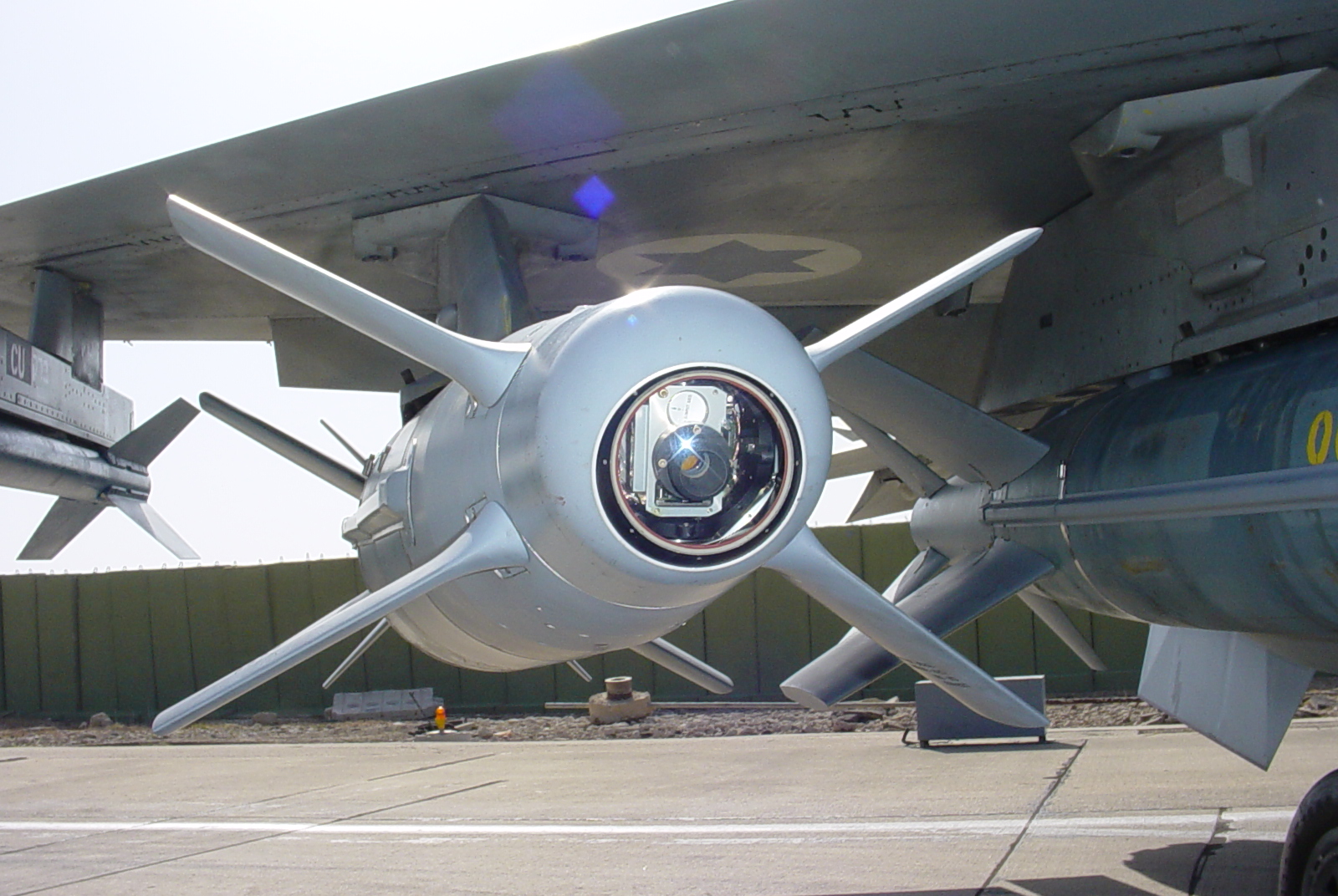Turning Steel Pipes into Smart Munitions
The field of guided missile conversion has made headlines recently with the expansion of Iran's precision missile project throughout the Middle East. But while Tehran and Hezbollah have only been involved in this activity over the last few years, the Israeli defense industries have already gained extensive experience converting "dumb" ordnance into precision-guided munitions
Dan Arkin
| 19/01/2020
The precision missile project of Iran and Hezbollah has been the cause for serious concern in Israel owing to the threat inherent in precision-guided munitions (PGMs). Alongside the development effort of our enemies, PGMs have been manufactured in Israel for many years, and the Israeli defense industries possess extensive experience and worldwide reputation in the field of precision enhancement. Numerous aerial and ground forces around the world use Israeli-made smart bombs on a regular basis
The transition from inaccurate, statistical ordnance to precision-guided munitions took place less than twenty years ago. The reasons were an attempt to prevent collateral damage and avoid, or at least minimize, engaging uninvolved parties, and above all – to make munitions more precise and capable of hitting their intended targets.
Many armed forces around the world, especially the larger ones, kept depots full of outdated bombs and rockets, which were nothing more than steel pipes filled with explosives. They started looking for a way to convert their inaccurate ordnance into precision weapons. "The idea was not to change the artillery gun, the tank, or the aircraft but rather to provide the artillery gun, the tank gun, or the aircraft with precision ground and aerial munitions that suit the platforms in use," says Ron Tryfus, Marketing and Business Development VP at IAI's Systems Missiles & Space Group. "It would be wrong to think that accurate munitions are more costly than 'dumb' ordnance, as if you have precision-guided munitions, you will save on the production of a lot of 'dumb' ordnance."
Transplanting a Brain into the Iron
"A standard 'dumb' bomb is released from the aircraft and drops to the ground according to the laws of gravity," explains Sagi Peleg, VP Strategy & Business Development at Elbit Systems and a former IAF fighter pilot. "This is what we call a statistical bomb. We looked for ways to provide the iron bombs with a flight capability. Since the early 1980s, they started making ordnance 'smarter,' so we 'transplanted a brain into the iron.' We did that by using a kit that makes the bomb 'smart' and 'teaches' it to fly. The bomb has fins and you can steer it. This is the essence of the technology: you build a kit and attach it to the iron. You fit the bomb with fins, install a small computer in the kit for the steering function, the computer steers the bomb to the right, to the left, and enables the bomb to fly quickly to the target and hit it accurately."
In addition to this kind of simple and fairly common precision enhancement kit, other types include a kit with a laser homing head, an electro-optical kit, and an electro-magnetic kit. The most advanced kit is the one capable of interfacing with the pilot, "communicating" with him, and receiving data before the ordnance departs on the way to the target.

Lizard laser guidance systems. Photo: By Elbit System
Peleg explains that Elbit Systems specializes in the development, manufacturing, and marketing of a range of homing head categories that utilize a laser beam. How do you manufacture a precision laser-guided bomb? A small sensor, the size of a coin, is fitted to the bomb. It can home onto a spot created by a laser beam. The source generating the laser beam (on the ground or onboard another aircraft) "illuminates" the target by creating the spot on it. The sensor on the bomb identifies the spot and runs the bomb directly to the target. The pilot will get his aircraft to the target area, the sensor fitted to the bomb will identify the laser spot, and the bomb will steer itself to the target. Sensors of this type may be attached to various types of ordnance – bombs, rockets, artillery shells, and mortar shells.
Steering Directly to the Target
With the electro-optical kit, a camera is fitted to the tip of the bomb and "sees" the target. An electro-magnetic homing head includes a radar, fitted to the bomb, the rocket, or the missile.
All of the above are examples of ordnance that underwent cutting-edge precision enhancement processes. Elbit Systems manufactures kits that use several guidance methods for ordnance, the most common of which is GPS guidance. An iron bomb is fitted with a small GPS receiver, capable of picking up the signals of the GPS satellites in the sky. The receiver knows its own position, it knows the location of the target at which the bomb is delivered, and based on this data, it can calculate the path of the bomb right into the heart of the target.
Elbit Systems markets their Lizard laser guidance systems to clients in Israel and overseas. These systems enable fighter aircraft to attack targets very precisely while keeping collateral damage to a minimum. "You fit laser equipment, a small sensor, and some electronics to the tip of an iron bomb, and what you get is an insanely accurate munition," they say at Elbit Systems. Another product by Elbit Systems is the GATR rocket – an advanced, laser-guided 70mm tactical rocket with extended range, a high-precision warhead, lock-on before launch and lock-on after launch capabilities, intended primarily for fighter aircraft and attack helicopters.
In the world of "dumb" bombs converted to "smart" bombs, one of the most prominent products is JDAM (Joint Direct Attack Munition), developed originally by the Boeing Corporation for the US Navy and Air Force. Initially, they fitted the bomb with a tail fin system, which converted a bomb that "hitherto traveled along a free ballistic trajectory" into a precision-guided bomb. The next stage involved fitting steering surfaces to an iron bomb, a connection to the computer of the fighter aircraft, and fitting an inertial navigation system and a computer-based satellite navigation system. All of these kits may be fitted to the bomb very quickly, and the armorers do not require any specialized technical training. The Israeli Air Force Bulletin (Issue 149, 2003) reported that the IAF had acquired JDAM munitions from Boeing for its F-16 fleet. The kit consisted of three elements: steering surfaces, a tail fin system with a satellite communication receiver and a computer, and a communication link to the aircraft. In this way, the "dumbest" bomb was converted into the most sophisticated bomb.
Upgrading the Entire System
Ron Tryfus of IAI says his company focuses on the field of ordnance infrastructures, which consists of the addition of navigation capabilities and the ability to home onto the target. These activities include integration of elements and system miniaturization. "We manufacture kits that change the ability of the ordnance to reach the target by adding smart homing," says Trifus, who explains that IAI offers peripheral upgrading of the system. In other words, "If the client's project is a certain gun, we upgrade its command and control system. We fit it with a radar system by ELTA, and you have upgraded the entire system, not just the projectile of the gun," he says.
This is the peripheral approach, which means systemic treatment. Not just an upgrading of the projectile, but an upgrading of the entire system around the gun battery. The advantage of IAI, they explained at the company, is its size – all of the activities are available in-house, under one roof: precision enhancement, navigation, tools, offensive or defensive systems – everything is available in IAI's backyard. As an example, Trifus explained: "We take a standard GP bomb and convert it into a precision-guided munition using a variety of resources, including laser, satellite communication, GPS, optical capabilities – all within the kit. The client acquires kits or bombs upgraded by the kit. The price of a precision enhancement kit is three to four times the price of the bomb. Installation and use are very simple and straightforward. Any armorer in a fighter aircraft squadron or a gunner in an artillery battery will be able to fit the kit to the ordnance."

Top Gun By the IAI
Two systems that are typical of the high-standard "ordnance infrastructure" approach offered by IAI are Sky Capture and Top Gun. Sky Capture is a C3 system for air defense systems, which converts outdated anti-aircraft systems into high-precision, effective systems through data fusion, sensors, surveillance and fire control radar, and state-of-the-art electro-optical sensors, all by IAI and ELTA. The Sky Capture system provides the interception resources with accurate target data and directs the threat spotting and engagement process according to the type of target. The Sky Capture system offers a unique systemic solution based on the future generation of the world of air defense.
Top Gun is a trajectory-correcting fuse for artillery shells, used by the IDF. The fuse is fitted to 155mm artillery shells and makes it possible to steer and direct the shell in mid-flight to the map reference of the target. Steering is accomplished by fins deployed by means of miniaturized avionics incorporated in the fuse. At IAI, they say that this is an innovative, world-first development. It was unveiled at the AUSA exhibition in Washington in October 2017. IAI publications state that the fuse measures its position in space and calculates the optimal path of the shell so as to ensure that it hits its intended target. This converts standard artillery shells into precision-guided munitions.

Rafael's SPICE system
Rafael Advanced Defense Systems also manufactures systems that convert standard ordnance into precision-guided munitions. Their SPICE system is a kit that converts a standard bomb into a "smart" munition using guidance based on an electro-optical or GPS sensor. The guidance kit includes a homing head with an Inertial Navigation System (INS) and a GPS system. SPICE can correct the trajectory of the bomb using fins and small wings, thereby converting a "dumb" bomb into a precision-guided munition capable of a CEP of three meters.
Rafael's SPICE system is used by F-15, F-16, and other fighter aircraft, as well as on an extensive range of general-purpose bombs. Rafael offers several models – SPICE 250, SPICE 1000, and SPICE 2000. Their publications present SPICE as an air-to-surface stand-off, autonomous weapon, employed by Israel and other militaries around the world.
The field of guided missile conversion has made headlines recently with the expansion of Iran's precision missile project throughout the Middle East. But while Tehran and Hezbollah have only been involved in this activity over the last few years, the Israeli defense industries have already gained extensive experience converting "dumb" ordnance into precision-guided munitions
The precision missile project of Iran and Hezbollah has been the cause for serious concern in Israel owing to the threat inherent in precision-guided munitions (PGMs). Alongside the development effort of our enemies, PGMs have been manufactured in Israel for many years, and the Israeli defense industries possess extensive experience and worldwide reputation in the field of precision enhancement. Numerous aerial and ground forces around the world use Israeli-made smart bombs on a regular basis
The transition from inaccurate, statistical ordnance to precision-guided munitions took place less than twenty years ago. The reasons were an attempt to prevent collateral damage and avoid, or at least minimize, engaging uninvolved parties, and above all – to make munitions more precise and capable of hitting their intended targets.
Many armed forces around the world, especially the larger ones, kept depots full of outdated bombs and rockets, which were nothing more than steel pipes filled with explosives. They started looking for a way to convert their inaccurate ordnance into precision weapons. "The idea was not to change the artillery gun, the tank, or the aircraft but rather to provide the artillery gun, the tank gun, or the aircraft with precision ground and aerial munitions that suit the platforms in use," says Ron Tryfus, Marketing and Business Development VP at IAI's Systems Missiles & Space Group. "It would be wrong to think that accurate munitions are more costly than 'dumb' ordnance, as if you have precision-guided munitions, you will save on the production of a lot of 'dumb' ordnance."
Transplanting a Brain into the Iron
"A standard 'dumb' bomb is released from the aircraft and drops to the ground according to the laws of gravity," explains Sagi Peleg, VP Strategy & Business Development at Elbit Systems and a former IAF fighter pilot. "This is what we call a statistical bomb. We looked for ways to provide the iron bombs with a flight capability. Since the early 1980s, they started making ordnance 'smarter,' so we 'transplanted a brain into the iron.' We did that by using a kit that makes the bomb 'smart' and 'teaches' it to fly. The bomb has fins and you can steer it. This is the essence of the technology: you build a kit and attach it to the iron. You fit the bomb with fins, install a small computer in the kit for the steering function, the computer steers the bomb to the right, to the left, and enables the bomb to fly quickly to the target and hit it accurately."
In addition to this kind of simple and fairly common precision enhancement kit, other types include a kit with a laser homing head, an electro-optical kit, and an electro-magnetic kit. The most advanced kit is the one capable of interfacing with the pilot, "communicating" with him, and receiving data before the ordnance departs on the way to the target.

Lizard laser guidance systems. Photo: By Elbit System
Peleg explains that Elbit Systems specializes in the development, manufacturing, and marketing of a range of homing head categories that utilize a laser beam. How do you manufacture a precision laser-guided bomb? A small sensor, the size of a coin, is fitted to the bomb. It can home onto a spot created by a laser beam. The source generating the laser beam (on the ground or onboard another aircraft) "illuminates" the target by creating the spot on it. The sensor on the bomb identifies the spot and runs the bomb directly to the target. The pilot will get his aircraft to the target area, the sensor fitted to the bomb will identify the laser spot, and the bomb will steer itself to the target. Sensors of this type may be attached to various types of ordnance – bombs, rockets, artillery shells, and mortar shells.
Steering Directly to the Target
With the electro-optical kit, a camera is fitted to the tip of the bomb and "sees" the target. An electro-magnetic homing head includes a radar, fitted to the bomb, the rocket, or the missile.
All of the above are examples of ordnance that underwent cutting-edge precision enhancement processes. Elbit Systems manufactures kits that use several guidance methods for ordnance, the most common of which is GPS guidance. An iron bomb is fitted with a small GPS receiver, capable of picking up the signals of the GPS satellites in the sky. The receiver knows its own position, it knows the location of the target at which the bomb is delivered, and based on this data, it can calculate the path of the bomb right into the heart of the target.
Elbit Systems markets their Lizard laser guidance systems to clients in Israel and overseas. These systems enable fighter aircraft to attack targets very precisely while keeping collateral damage to a minimum. "You fit laser equipment, a small sensor, and some electronics to the tip of an iron bomb, and what you get is an insanely accurate munition," they say at Elbit Systems. Another product by Elbit Systems is the GATR rocket – an advanced, laser-guided 70mm tactical rocket with extended range, a high-precision warhead, lock-on before launch and lock-on after launch capabilities, intended primarily for fighter aircraft and attack helicopters.
In the world of "dumb" bombs converted to "smart" bombs, one of the most prominent products is JDAM (Joint Direct Attack Munition), developed originally by the Boeing Corporation for the US Navy and Air Force. Initially, they fitted the bomb with a tail fin system, which converted a bomb that "hitherto traveled along a free ballistic trajectory" into a precision-guided bomb. The next stage involved fitting steering surfaces to an iron bomb, a connection to the computer of the fighter aircraft, and fitting an inertial navigation system and a computer-based satellite navigation system. All of these kits may be fitted to the bomb very quickly, and the armorers do not require any specialized technical training. The Israeli Air Force Bulletin (Issue 149, 2003) reported that the IAF had acquired JDAM munitions from Boeing for its F-16 fleet. The kit consisted of three elements: steering surfaces, a tail fin system with a satellite communication receiver and a computer, and a communication link to the aircraft. In this way, the "dumbest" bomb was converted into the most sophisticated bomb.
Upgrading the Entire System
Ron Tryfus of IAI says his company focuses on the field of ordnance infrastructures, which consists of the addition of navigation capabilities and the ability to home onto the target. These activities include integration of elements and system miniaturization. "We manufacture kits that change the ability of the ordnance to reach the target by adding smart homing," says Trifus, who explains that IAI offers peripheral upgrading of the system. In other words, "If the client's project is a certain gun, we upgrade its command and control system. We fit it with a radar system by ELTA, and you have upgraded the entire system, not just the projectile of the gun," he says.
This is the peripheral approach, which means systemic treatment. Not just an upgrading of the projectile, but an upgrading of the entire system around the gun battery. The advantage of IAI, they explained at the company, is its size – all of the activities are available in-house, under one roof: precision enhancement, navigation, tools, offensive or defensive systems – everything is available in IAI's backyard. As an example, Trifus explained: "We take a standard GP bomb and convert it into a precision-guided munition using a variety of resources, including laser, satellite communication, GPS, optical capabilities – all within the kit. The client acquires kits or bombs upgraded by the kit. The price of a precision enhancement kit is three to four times the price of the bomb. Installation and use are very simple and straightforward. Any armorer in a fighter aircraft squadron or a gunner in an artillery battery will be able to fit the kit to the ordnance."

Top Gun By the IAI
Two systems that are typical of the high-standard "ordnance infrastructure" approach offered by IAI are Sky Capture and Top Gun. Sky Capture is a C3 system for air defense systems, which converts outdated anti-aircraft systems into high-precision, effective systems through data fusion, sensors, surveillance and fire control radar, and state-of-the-art electro-optical sensors, all by IAI and ELTA. The Sky Capture system provides the interception resources with accurate target data and directs the threat spotting and engagement process according to the type of target. The Sky Capture system offers a unique systemic solution based on the future generation of the world of air defense.
Top Gun is a trajectory-correcting fuse for artillery shells, used by the IDF. The fuse is fitted to 155mm artillery shells and makes it possible to steer and direct the shell in mid-flight to the map reference of the target. Steering is accomplished by fins deployed by means of miniaturized avionics incorporated in the fuse. At IAI, they say that this is an innovative, world-first development. It was unveiled at the AUSA exhibition in Washington in October 2017. IAI publications state that the fuse measures its position in space and calculates the optimal path of the shell so as to ensure that it hits its intended target. This converts standard artillery shells into precision-guided munitions.

Rafael's SPICE system
Rafael Advanced Defense Systems also manufactures systems that convert standard ordnance into precision-guided munitions. Their SPICE system is a kit that converts a standard bomb into a "smart" munition using guidance based on an electro-optical or GPS sensor. The guidance kit includes a homing head with an Inertial Navigation System (INS) and a GPS system. SPICE can correct the trajectory of the bomb using fins and small wings, thereby converting a "dumb" bomb into a precision-guided munition capable of a CEP of three meters.
Rafael's SPICE system is used by F-15, F-16, and other fighter aircraft, as well as on an extensive range of general-purpose bombs. Rafael offers several models – SPICE 250, SPICE 1000, and SPICE 2000. Their publications present SPICE as an air-to-surface stand-off, autonomous weapon, employed by Israel and other militaries around the world.



